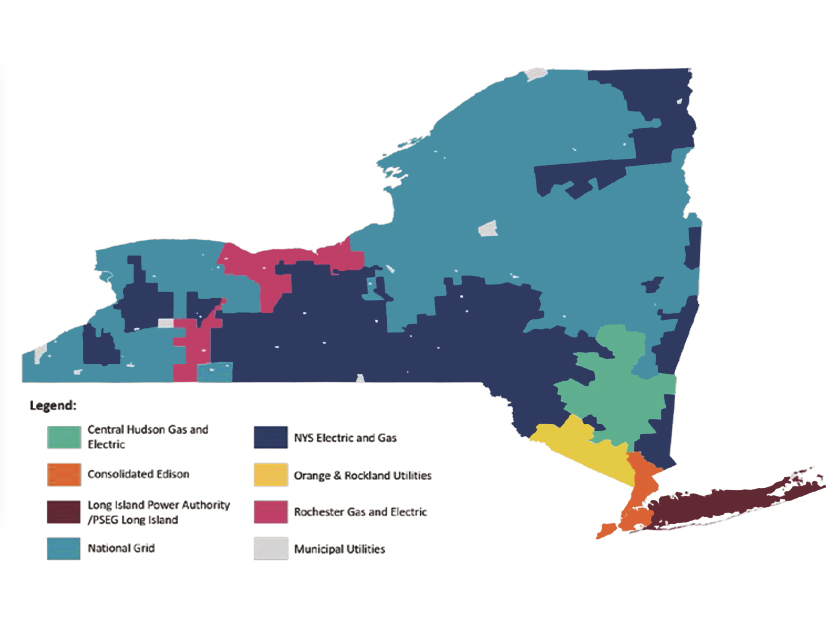New York transmission owners on Monday urged the Public Service Commission to reject a challenge to its new category for transmission projects intended to help the state meet its climate goals (20-E-0197).
The TOs, including all the investor-owned utilities in the state as well as the New York Power Authority and the Long Island Power Authority, said that LS Power Grid New York’s petition for a rehearing was “legally defective” and construed the facts of the PSC’s order.
The PSC in September established a category for transmission and distribution investments made to help achieve the state’s environmental goals. It directed IOUs to revise their proposed benefit-cost analyses and resubmit them within 90 days. (See New York Adopts Groundbreaking Tx Investment Rules.)
LS Power in October argued that costs of local transmission can only be allocated under the NYISO tariff’s FERC Order 1000 processes; that any regional cost allocation is pre-empted by FERC’s exclusive jurisdiction over transmission; and that any facilities that operate over 200 kV are not “local” facilities. On the last point, the company urged the commission to “clarify this bright line.”
The TOs countered that LS Power did not meet the requirements for rehearing requests, as it “points to no errors of fact or changed circumstances, and the legal errors it alleges are wrong as a matter of law and/or are procedurally barred.”
They also said that NYISO’s competitive solicitation and planning process does not displace alternative, voluntary, multi-TO funding of transmission projects, which remains lawful and is encouraged by FERC.
In addition, they said, LS Power’s 200-kV argument is flawed because FERC permits participant funding for both local and non-local transmission projects, irrespective of voltage. FERC’s definition of local transmission “does NOT apply a 200-kV bright line” to projects that generally serve local load, they said, and the state’s Accelerated Renewable Energy Growth and Community Benefit Act does not contain a voltage bright line.
With both LIPA and Consolidated Edison having proposed projects above 200 kV, LS Power argued that any PSC decision to permit New York utilities to recover the costs of such high-voltage projects through a statewide assessment would interfere with FERC’s exclusive jurisdiction over transmission services under the Federal Power Act.
“The commission should make clear to all the New York utilities that they should not undertake needless and expensive planning for such projects,” LS Power said.
The TOs refuted LS Power’s claim, saying it “is negated by the PSC’s explicit recognition of FERC’s jurisdiction over voluntary participant funding agreements,” and that LS Power “erroneously assumes that the NYTOs would not file FERC-jurisdictional participant funding agreements for FERC’s review in advance of implementing the associated rates.”


